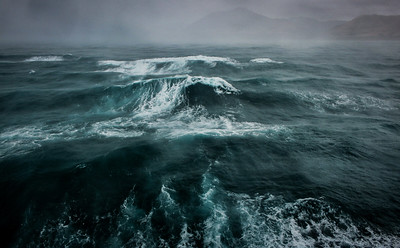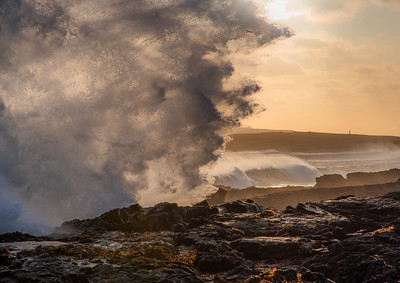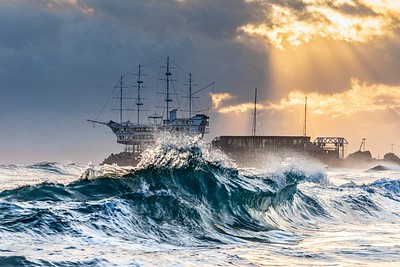The ocean is a major driver of the world’s weather and climate covering some 70% of the Earth’s surface.
 ©
WMO/Emily Baker
©
WMO/Emily Baker
For thousands of years, weather hazards resulted in lives and goods being lost at sea. But in 1850, countries started to share weather information which helped mariners to avoid these hazards.
This is how in 1873, the International Meteorological Organization was created, the predecessor of the World Meteorological Organization (WMO).
WMO has the role in advancing ocean science, research, services, training and capacity development to prepare for the weather and climate hazards on land and sea. The ocean information helps to guide decisions in many areas of life.
Related links:
WMO and the Ocean – A short film that explains the ocean's role in influencing climate and water, and WMO's role in advancing ocean science, research, services, training and capacity development to advance the understanding of the ocean
 ©
WMO/Maximilian Ziegler
©
WMO/Maximilian Ziegler
Share value information about the important role of the ocean with friends and family.
Be aware of the impact of climate change in the ocean.
Learn about the role of your National Meteorological and Hydrological Service related to oceans to help them to act.
Related links:
Oceans Buoys – A public awareness video that provides a basic understanding on the value of ocean buoys
Coastal Inundation – A public awareness video for the Pacific Islands
WMO and the Ocean – A short film that explains the ocean's role in influencing climate and water, and WMO's role in advancing ocean science, research, services, training and capacity development to advance the understanding of the ocean
 ©
WMO/Seongcheol Gwon
©
WMO/Seongcheol Gwon
About 40% of the global population live within 100km of the coast. Sea level rise is increasing vulnerability to hazards like storm surge.
Up to 90% of world trade is transported by sea. Marine services and forecasts are needed for safety and efficiency.
The ocean absorbs about 90% of excess heat trapped by greenhouse gases and is being hit hard by climate change.
The ocean acts as the Earth's thermostat and conveyor belt and drives our weather and climate.